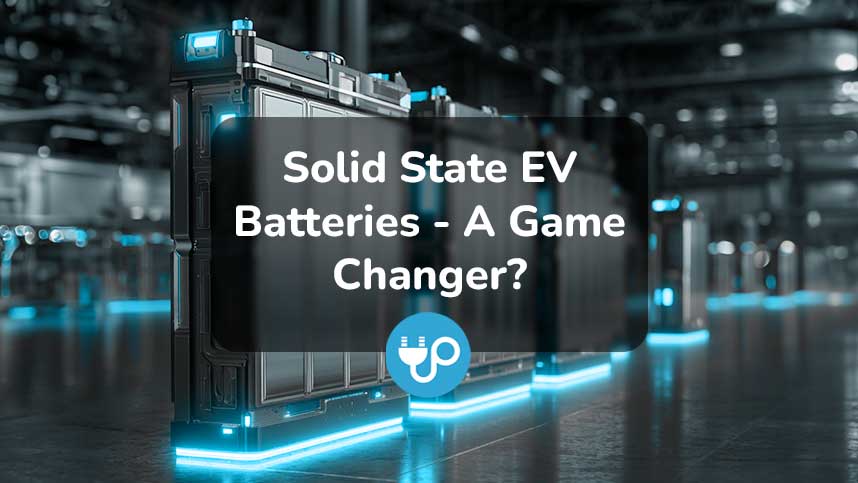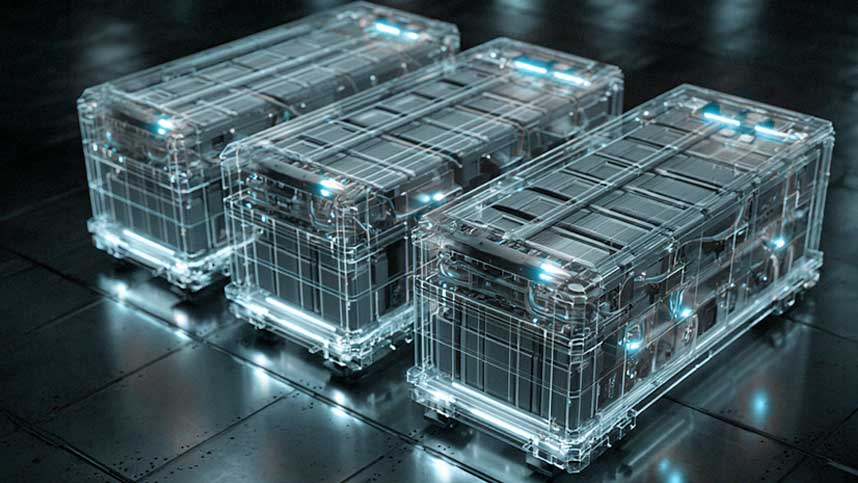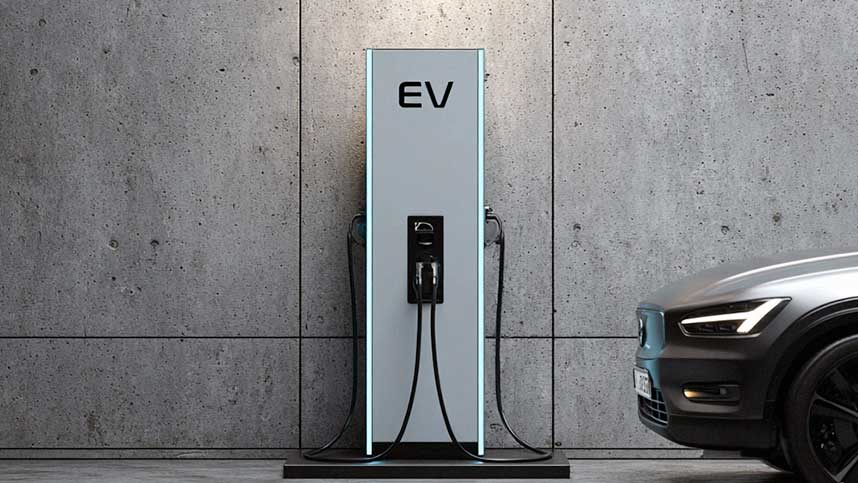
Solid State EV Batteries – A Game Changer?
Electric vehicles (EVs) are revolutionising transport, but their future hinges on better batteries.
Solid state batteries are often touted as the next big leap in EV technology.
They are a potential game-changer, promising longer driving ranges, faster charging, and improved safety.
Unlike today’s lithium-ion batteries, which use liquid electrolytes, solid state EV batteries use solid materials for the electrolyte.
This fundamental difference could overcome many limitations of current batteries and dramatically enhance EV performance.
Chapters
What are Solid State EV Batteries?

Solid state EV batteries (SSBs) are advanced rechargeable batteries that use a solid electrolyte instead of the liquid or gel electrolytes found in conventional lithium-ion cells.
In practical terms, this means every part of the battery cell is solid.
This includes the electrodes (anode and cathode) and the electrolyte in between.
By replacing the flammable liquid electrolyte with a stable solid material, SSBs can pack more energy into the same space and offer better safety.
Solid state batteries are theoretically capable of much higher energy density than typical lithium-ion batteries.
They still operate on the same basic principles as other batteries (with lithium ions shuttling between electrodes during charge and discharge), but the all-solid design opens up new possibilities.
This design allows the use of materials like metallic lithium at the anode and high-voltage cathodes.
This can boost energy storage compared to today’s EV batteries.
How do Solid State EV Batteries Work?
A solid state battery works similarly to a conventional lithium-ion battery, with one major difference – the electrolyte is solid.
In a typical EV battery, there are two electrodes, with a porous separator and liquid electrolyte between them.
When the battery charges or discharges, lithium ions flow through the liquid electrolyte from one electrode to the other, while electrons flow through an external circuit to do useful work.
In a solid state battery, the liquid is replaced by a solid electrolyte that performs the same job of shuttling ions, but in a rigid form.
The solid electrolyte also acts as the separator, preventing the electrodes from touching.
This dual role means an SSB cell can be made more compact.
There’s no need for a bulky separator film or excess electrolyte, so the cell can be thinner for the same energy.
Using a solid electrolyte in place of liquid can shrink the battery cell’s thickness significantly, allowing more active material (electrode) in the same volume.
The solid medium is also far more stable.
This stability means no flammable liquid to ignite, and the solid electrolyte remains effective even if a cell is damaged, greatly reducing fire risk.
Types of Solid State EV Batteries
Not all solid state batteries use the same materials.
There are a few types of solid electrolytes and cell designs under development for EV use.
Broadly, solid electrolytes fall into two categories:
Polymer-Based Solid State Batteries
Some solid state batteries use a solid polymer electrolyte.
This is a plastic-like material that can conduct lithium ions.
These polymers are mixed with lithium salts to create a flexible, solid ionic conductor.
Polymer solid state batteries have the advantage of being lighter and somewhat flexible.
They were among the first SSBs used in practice.
Early electric prototypes like the Bolloré BlueCar used a lithium metal polymer battery.
The downside is that many polymer electrolytes have relatively low ionic conductivity at room temperature.
They often require the battery pack to be kept warm (around 60–80 °C) to achieve good performance.
This means polymer SSBs might need a heating system in an EV, which complicates design.
Despite these challenges, polymer solid state batteries are a promising type, especially as researchers improve their conductivity and stability.
They offer a path to safer EV batteries that could be made in thin, layered forms.
Ceramic (Inorganic) Solid State Batteries
Another major category uses ceramic solid electrolytes that can carry lithium ions.
Examples include oxide ceramics and sulfide-based glasses.
These materials are typically hard, non-flammable crystals with fast ion conduction pathways.
Ceramic electrolytes can support higher battery voltages and often have excellent stability with high-energy cathodes.
They are also not prone to catch fire and have a wide operating temperature range.
For instance, oxide ceramics have high thermal stability and can function up to around 200 °C without decomposing.
This makes them very safe in abusive conditions.
However, ceramics are brittle.
Any tiny cracks can increase resistance or let dendrites form, hurting performance.
Manufacturing ceramic SSBs is also challenging, as it requires very precise techniques to form dense, defect-free electrolyte layers and maintain good contact with electrodes.
Despite these hurdles, many companies are pursuing ceramic solid state battery designs for EVs.
These batteries promise high ionic conductivity at room temperature and the ability to use a lithium metal anode for maximum energy.
There are also ‘hybrid’ solid state batteries which use mostly solid electrolyte with a small amount of liquid to fill any gaps.
These are seen as a bridge technology currently.
Other Types
Beyond polymers and ceramics, research has explored glassy electrolytes and halide electrolytes.
These can have very high ionic conductivity.
Each type has its pros and cons, but the goal is the same: a stable, ion-conducting solid that can replace liquid electrolyte in a battery cell.
Solid State EV Battery Benefits
Solid state batteries bring a host of potential benefits to electric vehicles.
Here are the major advantages that have EV enthusiasts excited:
Higher Energy Density and Longer Range
Solid state batteries can store much more energy for a given weight or size than traditional EV batteries.
By using energy-dense materials and eliminating excess components, they can achieve up to double the energy density of typical lithium-ion packs.
In practical terms, an EV with solid state batteries could drive much farther on a single charge, improving how long a fully charged electric car can last.
This dramatically reduces range anxiety for drivers.
Improved Safety
Safety is a huge advantage of SSB technology.
Because there is no flammable liquid inside, the risk of fire or explosion is far lower.
The solid electrolyte is chemically stable and won’t combust, which means even if a battery cell is punctured or overheats, it’s far less likely to lead to a thermal runaway event.
Automotive producers see this as a critical benefit.
It can make EVs safer in collisions and remove the need for some heavy protective structures.
Better safety also contributes to longevity, since the cells are not undergoing the same kind of internal degradation from liquid reactions.
Faster Charging Speeds
Solid state EV batteries are expected to charge much faster than today’s batteries, leading to charge rage.
The solid electrolyte can tolerate higher currents and temperatures during charging, allowing for ultra-fast charge rates without damage.
Some prototypes have demonstrated charging to 80% capacity in as little as 10 minutes.
This is comparable to the time it takes to fill a petrol car’s tank, which could be a game-changer in convenience.
Fast charging would make long road trips in an EV more viable.
Drivers could top up hundreds of miles of range in the time it takes to grab a coffee, drastically reducing how long it takes to charge an electric car.
Solid state cells maintain performance during rapid charging, unlike many lithium-ion cells that have to slow down to avoid overheating.
Longer Lifespan and Durability
Another benefit is the potential for a much longer battery life.
Solid state batteries are projected to last through more charge cycles before degrading significantly.
Some estimates suggest an SSB could handle several thousand cycles with minimal capacity loss.
The solid electrolyte is less prone to the formation of SEI layers (solid-electrolyte interface issues) and other side reactions that plague liquid cells over time.
This means less capacity fade year after year.
For an EV owner, a longer lifespan means the battery will likely outlast the car itself, reducing concerns about expensive battery replacements.
It also improves resale value and the overall sustainability of the vehicle.
Weight and Space Savings
Because SSBs pack more energy per unit of volume and mass, vehicle manufacturers can achieve the same range with a smaller, lighter battery pack.
This has knock-on benefits:
- A lighter EV uses less energy to move, improving efficiency.
- Improve the vehicle’s handling and performance.
- Manufacturers could use the space savings to add more cells and increase range further.
In either case, energy density gives more design freedom.
Less Cooling and Maintenance Needs
Solid state batteries generally run cooler and are more stable across temperatures.
This could allow EV designers to simplify or even eliminate some of the heavy cooling systems that current EV battery packs require.
Less thermal management means less energy wasted on cooling and potentially lower maintenance.
It also reduces the chances of heat-related wear and tear.
Moreover, since SSBs don’t leak or require venting, the battery pack can be sealed more effectively, keeping moisture out and improving longevity.
All of this contributes to a more robust battery system that demands less attention from the owner.
Solid State EV Battery Downsides
With all the hype, it’s important to recognise that solid state batteries also come with significant challenges and downsides, especially in their current stage of development:
High Cost (for Now)
Solid state EV batteries are very expensive to produce at present.
The materials for solid electrolytes tend to cost more than the components of a liquid cell.
The manufacturing process is also more complex.
Existing battery factories are set up for making liquid-based cells.
Switching to solids means investing in entirely new equipment and techniques.
As a result, early solid state batteries are being made in limited quantities at high cost.
Currently, they are more expensive than lithium-ion batteries on a per-kWh basis.
The industry expects costs to come down with mass production, but that could take years.
For the foreseeable future, EVs with solid state batteries (when they first appear) might carry a price premium, likely targeting luxury models first.
Current Lifecycle Limitations
Although solid state batteries promise longer lifespans in theory, many prototypes still struggle with longevity issues.
Some early solid state cells have shown faster capacity fade or higher internal resistance build-up after repeated cycling.
This is due to problems like interface degradation.
Research is ongoing to fix this, and recent developments are encouraging.
However, until solid state batteries can prove they reliably last for hundreds of thousands of miles, this remains a concern.
It’s worth noting that conventional lithium-ion batteries have improved a lot in longevity, so SSBs must at least match that in real-world conditions.
If issues like micro-cracks or resistance growth aren’t fully solved, they could offset the lifespan advantage.
Temperature and Performance Constraints
Each type of solid state battery has its own quirks.
As mentioned, polymer-based SSBs might need to stay warm to deliver full power, which is a limitation for everyday use.
Ceramic-based SSBs don’t have that issue, but they can suffer if not under enough pressure or if they experience thermal cycling that causes cracks.
Also, while SSBs tolerate heat better in terms of safety, extremely high currents can still pose problems.
A short-circuited solid state cell could release a lot of energy very quickly.
Though such events should be rare, very high energy density means any failure could be severe.
Additionally, some solid electrolytes are sensitive to humidity and require ultra-dry conditions during assembly, adding complexity to production.
Limited Availability and Unknowns
For EV buyers today, the biggest ‘downside’ is that you cannot buy an EV with a solid state battery yet.
All the benefits are still in the prototype or announcement stage.
Vehicle manufacturers and tech companies are racing to introduce the first SSBs in cars, but timelines are moving targets.
It’s expected that the first solid state battery EVs will appear around the middle to late part of this decade, likely in low-volume premium models.
Widespread use in mainstream, affordable cars may not happen until the 2030s, depending on how quickly the tech matures.
This means that, for now, EV shoppers shouldn’t hold their breath for a solid state option in the showroom.
Key Takeaways
Solid state EV batteries hold the promise to be a genuine game-changer for electric vehicles.
By using solid electrolytes, they offer a tantalising combination of higher energy density, greater safety, faster charging, and longer lifespan than today’s lithium-ion batteries.
For EV owners, this could mean cars that drive much farther on a charge, top up in the time it takes to refuel, and have virtually no risk of battery fires.
These advantages could accelerate the adoption of electric cars by addressing some of the biggest consumer concerns.
It’s no surprise that major automakers are investing heavily in solid state battery development, hoping to debut this technology in the coming years.
However, as of now, solid state batteries are still on the horizon rather than on the roads.
Prototype cells exist and show great performance in testing, but scaling them up to mass production is an ongoing challenge.
The first limited-release solid state EVs will likely appear in the latter half of this decade and initially in high-end models.
This means that for most EV buyers today, the tried-and-true lithium-ion battery will remain the standard for the next few years.
The transition to solid state will be gradual as the technology proves itself and costs come down.
Solid state batteries aren’t in our garages just yet, but they are coming, and they just might transform the EV landscape when they do.
For more information on solid state EV batteries, or if you’re interested in renting out your EV charger, get in contact with us here at Joosup.
Blog Archive
- Solid State EV Batteries – A Game Changer?
- What is a CT Clamp and Does My Charger Need One?
- Is Using an EV Granny Charger Safe?
- Charge Rage: Is It Really a Thing?
- Vehicle to Load (V2L): What It Is & How It Works
- 16 Top Charge Point Operators in the UK
- 8 Types of EV Battery Explained
- Where Can I Charge My Electric Car?
- Electric Car Maintenance and Servicing Guide
- How Often Should I Charge My Electric Car?
- How to Check EV Battery Health
- Do Electric Cars Pay Road Tax?
- October 2024 Budget: Key EV News
- EV vs ICE – Which is Best?
- Should I Charge My EV to 80 or 90 or 100%?
- UK Government Announces Hybrid Sales Allowed Until 2035
- BEV vs PHEV – What’s the Difference?
- Definitely Not A Guru (Jim Starling) Reviews Joosup
- How Long Do Electric Car Batteries Last?
- 25 New Electric Car Brands on UK Roads




